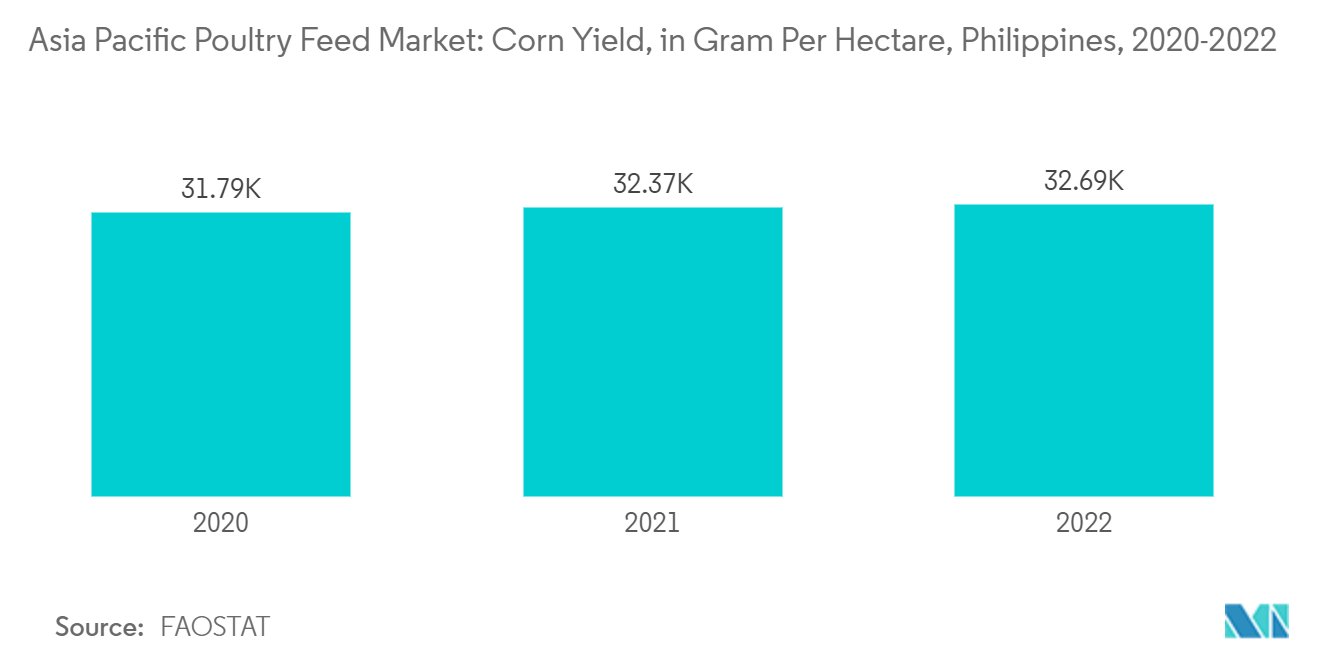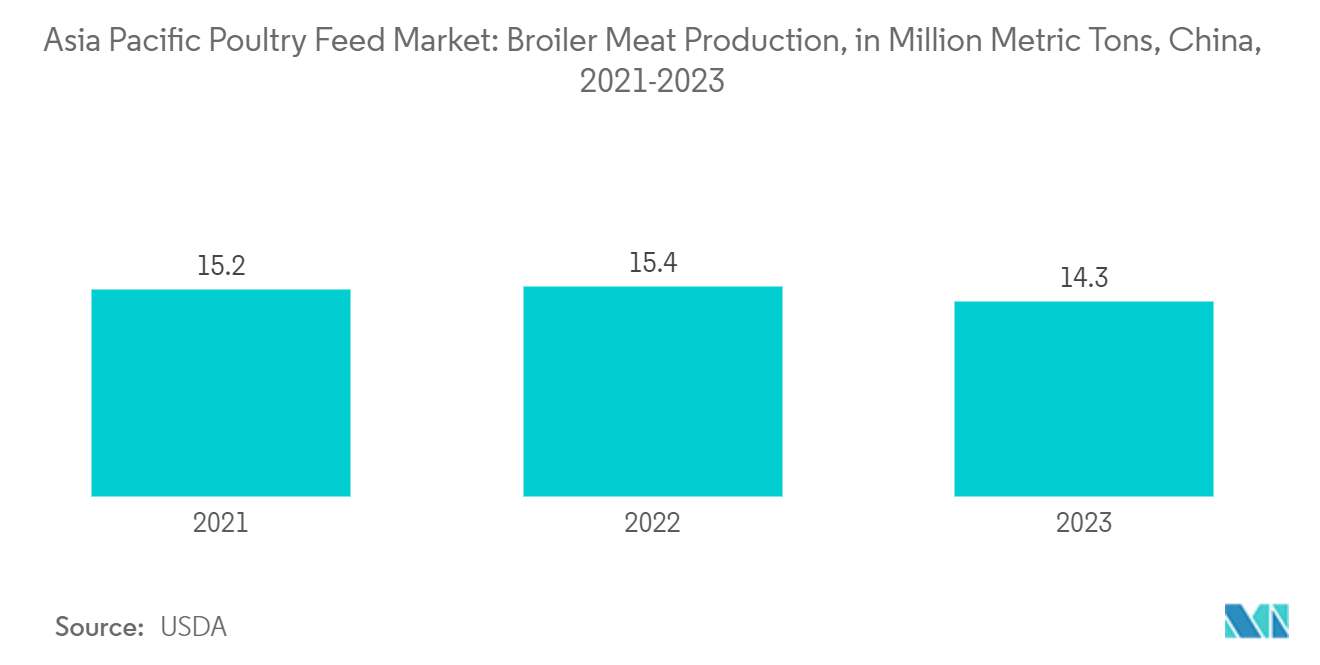Market Trends of Asia Pacific Poultry Feed Industry
The Cereals Segment is the Largest Growing Segment by Ingredients
Cereals are one of the important ingredients used in animal feeds in Asia-Pacific because they are one of the least expensive raw materials in most poultry feeds. Additionally, cereals such as corn, wheat, barley, and sorghum are essential for the production of compound feed due to their affordability, digestibility, and rich nutritional profile. For instance, according to the Feed Mills Association, the production of feed in Indonesia during the second quarter of 2023 slightly changed due to the high prices of corn compared to the previous year. Corn is a crucial component in feed formulation, making up 50%. The Ministry of Agriculture (MOA) reported that the price of corn at feed mills' gates in April 2023 was 5,799 IDR/kg (USD 387/MT), which is 1.7% higher than the price in April 2022 of 5,700 IDR/kg (USD 381/MT). Additionally, according to the FAOSTAT, the yield of these crops is observed to be increasing. In 2022, the yield of maize in the Philippines accounted for 32,689 grams per hectare from 32,368 grams per hectare in 2021. This rising yield of the crops also supports the usage of cereals as an ingredient in poultry feed, thereby strengthening the market.
Furthermore, grain corn consumed in most Asian countries is obtained from Argentina, Brazil, and others. Local corn production can only satisfy some of the demand, and the industry suffers from lower productivity and higher costs. Moreover, in 2021, China issued guidelines recommending the reduction of corn and soy meal in poultry feed that reshaped the flow of grains into the country. The country imported a lot more corn to compensate for the domestic deficit. Due to this, the poultry feed industry is exploring alternative cereals to reduce dependency on traditional sources like corn.
However, major corn feed providers are focusing on meeting the growing demand for corn feed in the countries despite the high prices. Nonetheless, locally sourced, eco-friendly cereals like sorghum and cassava are gaining popularity due to increased awareness. Major companies in the market are expanding the production of poultry feeds using cereals. For instance, in 2022, De Heus opened its fourth feed facility in Indonesia on a five-hectare area in PIER Pasuruan, East Java, with an annual production capacity of 300,000 MT. Cargill also inaugurated its USD 100 million corn feed mill in Indonesian cities Surabaya, Pasuruan, and Pandaan in September 2022 to cater to the growing demand for corn feed and boost the local economy.
Moreover, the use of low-cost technologies for processing cereals into poultry feeds is also favoring the growth of the segment. For instance, in 2023, a feed mill was opened in Kidapawan City on the southern main island of Mindanao, Philippines. This feed mill is used to process corn and rice into poultry diets, and solar energy contributes to cost savings.

Broiler is the Largest Growing Animal Type
Chicken is the most affordable and available meat in Asian countries. The adoption of advancements in poultry genetics and breeding has resulted in faster-growing broiler breeds with higher feed conversion efficiency. These high-performing broilers require specialized compound feeds tailored to their nutritional needs, driving demand for broiler compound feed products.
According to the Food and Agriculture Organization, in 2021, Bangladesh, China, India, Indonesia, Iran, and Japan were some of the major broiler-producing countries in the region. The broiler industry in China has experienced vigorous growth over the past two decades, both in terms of broiler numbers and the level of output per bird. The demand for broiler feed continues to be high in emerging economies in Asia-Pacific. Countries like China and India have an increasing preference for broiler meat. This leads to the rising use of quality feed for the expanding poultry population.
According to the USDA, in 2023, chicken production was expected to remain steady at 14.3 million metric tons (MMT) in China. Demand for affordable chicken products, particularly white broiler meat, is projected to grow due to consumers’ shift toward a more diverse protein diet for white broiler products. Corn, soybean meal, wheat, and premixes are the major raw materials included in the production of compound feed for broilers in China. The high cost of raw materials has impacted production in recent times. Despite this, China remains a dominant player in the market.
In countries such as India, the government has implemented various policies and schemes to promote the growth of the broiler industry, such as the Integrated Poultry Development in 2020. These initiatives support feed production and encourage the establishment of feed mills, which directly contribute to the growth of compound feed for broilers.


